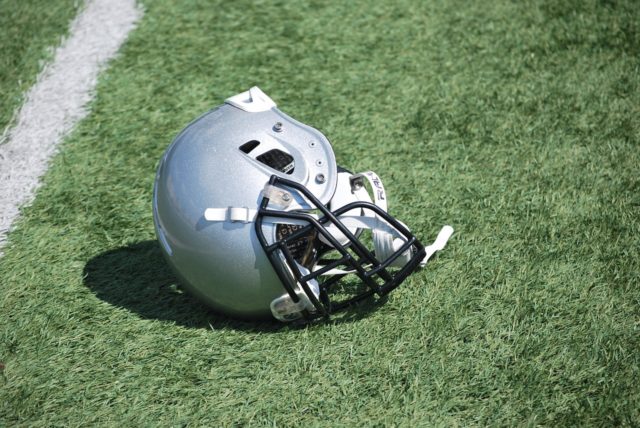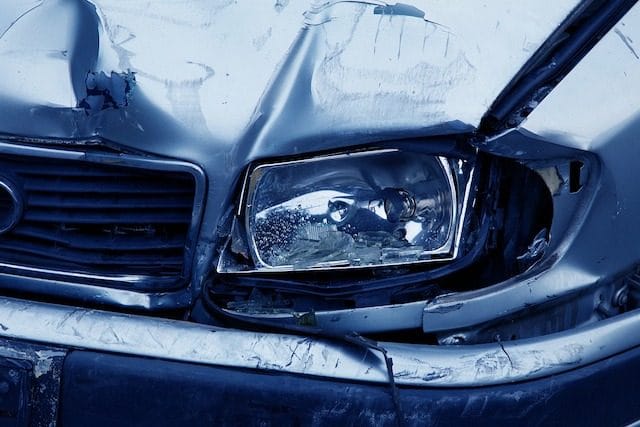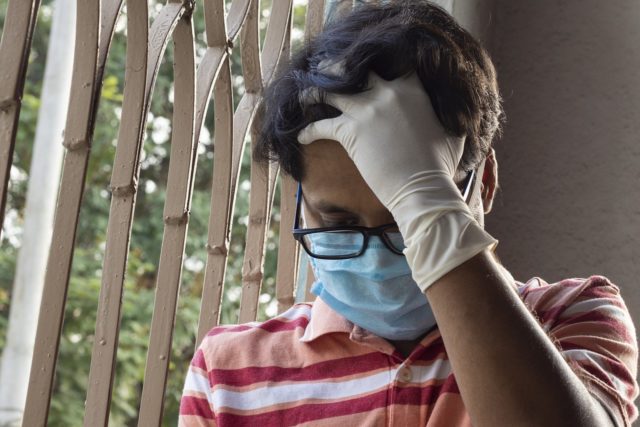Is there any greater irony than an authority figure harming those they’re trying to look after through a safety measure? A penguin parent smothering their hatchlings through protectiveness. Ed Gein’s mother psychologically warped him in an attempt to keep him free from sin. The entries on this list all had equally counterintuitive results, and in most cases were even more tragic.
10. Employee Safety Incentives

The Occupational Safety and Health Administration was founded in 1971. On its website it claims that in 1970 there were 14,000 deaths on job sites, and as of 2009 that number dropped to 4,340 even though there were twice as many workers in the US since its inception, which of course is supposed to be to their credit. However true that is, 2009 was also the year that the Government Accountability Office performed an audit that found it was quite likely that OSHA was massively over-reporting its success, if not potentially allowing the situation to worsen.
The report said that there were incentives for employers to underreport accidents at work sites (making the company seem better run and reassuring investors that deadlines would be met) but also for employees to underreport. As reported by the New York Times in November 2009, 53% of health practitioners reported receiving pressure to underreport, while 47% reported receiving such pressure from employees. As a result, the GAO estimated that illnesses, accidents, and other problems were being underreported by as much as 66%, or even 75% when employees received financial compensation if they reported low workplace mishaps. Enormous underreporting of illnesses was especially bad, as it was exactly the sort of practice that would contribute to an epidemic or worse.
9. Operation Gatekeeper

TopTenz has covered the extremely mixed impact that illegal immigrants have on the US, most significantly that some neighborhoods with larger populations of them have higher crime. One attempt at addressing this issue was President Clinton’s 1994 Operation Gatekeeper, which doubled funding and personnel for border guards, exacerbated punishments, offered deportation as a part of plea bargaining, and more than doubled deportation quotes to 100,000. As early as 2003 Foreign Affairs reported that the operation was not effective at curbing illegal immigration. That turned out to be only the beginning of its problems.
In 2016, the National Institute of Health published a report that while Gatekeeper lessened crossings at El Paso, Texas and San Diego, California, it primarily drove migrants to cross the border through the Sonoran Desert. The hardship of this route meant that many illegal immigrants were dissuaded from attempting a return crossing to Mexico, with an estimated 62% drop by 2010. Furthermore, more of them turned to smugglers and other criminals, known colloquially as “coyotes,” to guide them through to America, increasing demand for criminals on the border that crossed into the US. The number of migrant deaths caused by crossing through the desert instead of pre-Operation Gatekeeper routes was estimated at roughly 5,000. Even for someone who thinks migrant lives aren’t worth saving, there’s the matter that it still will make many of the survivors more dangerous as people. In short, Operation Gatekeeper may have been one of the largest blunders of Clinton’s time in the Oval Office.
8. Naloxone

The Opioid Epidemic has been so devastating for America that in 2017 alone it cost 47,600 Americans their lives. Thus when the drug Naloxone was authorized as a treatment for opioid abuse, it seemed as if it meant potentially tens of thousands of lives being saved a year. The actual result was a significant increase in loss of life in some regions. In the Midwest, the mortality rate from opioid overdose was reported by the National Institute of Health as increasing 14%. It wasn’t a problem with the efficacy of the drug itself, so what happened?
The findings from researchers at Wisconsin School of Business and and Texas A&M University from 2018 were that while Naloxone did indeed treat the harm of opioids well, it proved too effective of a reassurance for addicts. There was a massive uptick in how recklessly they would take opioids if they believed Naloxone meant they essentially had a perfect safety net. Considering the further issue that in 2019 the National Library of Medicine released a study that noted how the longterm effects of Naloxone were unknown, it begins to seem as if Naloxone may be one of the most harmful and yet still effective drugs ever approved.
7. Challenger O Rings

TopTenz has covered the issue of the 1986 Challenger shuttle disaster before, yet one aspect of the disaster bears special emphasis. As it happened on January 25, the engineering team for the shuttle launch was unanimous in telling the management that because of the forecasted weather for the launch being too cold for the o-rings sealing the connection between the solid fuel tank and the right booster rocket to retain proper firmness, the launch would need to be delayed.
Not only was the advisory to cancel the launch overruled, but those very o-rings were cited by the management as the reason that the original schedule could be kept safely. The shuttle possessed a redundant o-ring system, and so the reasoning was that even if the original rings failed that the secondary rings would still be functional. The fact that the redundant rings would be exposed to the same inclement weather and thus were as likely to fail seemed to not enter into the equation. To be fair to the mission managers, there had been previous flights under similar conditions where this same recommendation was made and yet the mission objectives had been achieved. However it’s inevitably the time that ends in flaming disaster that gets remembered.
6. Chin Straps

No one looks at two teams of football players and worries about them suffering a major injury from their chin straps. In 2006 through most of 2007 huge numbers of spectators had a very good reason to do so. That year Nike released a chin strap that was ruled to be highly defective by the US Consumer Product Safety Commission, resulting in 18 reported injuries.
These were not minor injuries. Two of them snapped and left cuts that required stitches on the players’ faces, two resulted in concussions, and one a broken nose. Ultimately 150,000 helmets were recalled, which would have meant horrible lacerations if not potentially the loss of an eye for practically a generation of players if they’d been kept in play and that particular type of chin strap continued to be manufactured.
Yet that was only the tip of the iceberg when it came to harm from sports equipment.
5. Football Helmets in General

For decades, football players had to rely on leather caps that weren’t too much better than flying caps on the field. Such equipment meant that as many as 30 players died in an average year. In 1949, the NFL changed its regulations to require helmets and chest pads. It turned out to be one of the most harmful things that commissioners and owners ever did to the
It turns out in this particular regard football players and opioid addicts are more alike than anyone would have expected. While their skulls and bodies in general were better protected by helmets and pads, the players took that as meaning that they could slam into each other much more aggressively than they ever had before. Anyone who has seen the 2015 Will Smith movie Concussion knows the consequences of that, but it’s still worth noting that in a single season the state of Missouri alone reported 1,336 brain injuries among players.
4. Anti Lock Brakes

So far the entries on this list have been centered on America, but this phenomenon is definitely also present around the World. The German Transportation Ministry published a study of taxi drivers in Munich in 1981. After antilock braking systems were installed that allowed the drivers more control of their vehicles, the report found that the number and severity of accidents among the control group did not decrease, and in fact it got even worse because the drivers became overconfident of their safety.
It was the same in the US. Between 1923 and 1996, despite a range of new safety features such as seatbelts, air bags, safety glass, etc., the number of driving fatalities out of 100,000 remained relatively static at 23 due to accidents becoming more severe largely from more reckless driving. This presents auto manufacturers and marketing departments with a fascinating challenge: How can they add more safety features to vehicles without making the customers aware of it to the point where they get overconfident?
3. Special Cigarette Filters

In the 1950s, public concern arose over the harm that cigarettes were inflicting on their customers. The tobacco manufacturer Hollingsworth and Vose responded in 1952 with cigarette filters that possessed crocidolite asbestos. The product was so harmful that of 33 employees that worked in a factory manufacturing them, 18 died of asbestos-related diseases. That makes the fact the asbestos filtered out roughly 30% of the tar in cigarettes a bit less reassuring. Fortunately (for want of a better word) production was discontinued by 1956.
Unfortunately an estimated 11.7 billion cigarettes had already been sold and mostly smoked by that time. Settlements for the mesothelioma that resulted from those smokes included $1.1 million that was paid to Don Lenney and his spouse, one of six such losses as of 2013. Presumably such court losses mean won’t have to worry about any asbestos e-cigarettes, but here at TopTenz we never say never.
2. Gun Control Makes People Less Safe

TopTenz has definitely had a lot to say about gun control over the years on both sides of the issue. Yet looking at in terms of pure statistics, there is overwhelming evidence that attempts to protect people by limiting access to guns has backfired. This is not said to pander or to provoke, it is an objective extrapolation. In fact it’s a very outspoken advocate for gun control that we have to thank for the availability of the data.
In 2013, President Barack Obama signed an executive order to finance an investigation by the Center for Disease Control regarding firearm regulation. The CDC found that the availability of guns for self-defense is an effective form of crime deterrence, since a study from 2008 found guns were between 66% and 1000% more likely to be used for self-defense than to commit a crime. In areas where guns were less accessible legally, a higher percentage of law-abiding crime victims were injured in the process. This indicates that for all the good intentions, the ugly truth of gun regulation is that the data indicates that it benefits criminals more than it does law-abiding citizens.
1. Social Distance Shaming

As hopefully the worst of the coronavirus pandemic has subsided, it’s time for introspection in case another strain or new disease emerges in the near future to disrupt our way of life. It’s become popular across the nation to blame people that were opposed to any sort of containment procedures for the near universal spread of the disease, but as with gun control it turns out that people on the opposite end of the political spectrum are due for some self-examination too.
June Tangney of George Mason University reported that attempting to shame people for not wearing a mask made them angry, and thus less willing to wear a mask than general social pressure or less aggressive persuasion. Further shaming caused resentment even among demographics generally more amenable to masks and other containment measures, such as the 133,000 member strong group Gays Over Covid. Those who believe strict measures will be needed to bring the Coronavirus pandemic and future pandemics to a complete end will need to adjust our approaches significantly if they don’t want to strengthen the opposition and potentially cost more lives than any known mutation.
Following Dustin Koski on Twitter is one of the most reckless things you can do on Twitter, and as this list shows, that means it’s one of the safest things you can do.